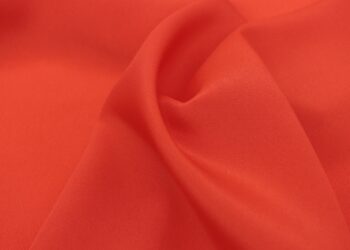You may not have heard of titanium dioxide, but you probably have eaten it: It is a common additive used as a white food color in a lot of products, such as cakes or popular pastries. In addition to the titanium dioxide (E171) used in foods, titanium dioxide is also used extensively as a coloring enhancer in cosmetics and over-the-counter products such as lipstick, sunscreen, toothpaste, creams, and powders. Most notable is that titanium dioxide, in its food-grade form, is used as a dye additive to brighten white foods such as dairy products, candies, frostings, and the powdered powder found in doughnuts. [Sources: 0, 4, 6]
In addition to its use as a food additive (E171), titanium dioxide is used as a white pigment in a wide range of other products, such as paints and plastics. Titanium dioxide is commonly used for providing white coloring to foods, such as cakes and pastries, sweets, or food additives. Uses of Titanium Dioxide in Food In foods, E171 is always combined with other ingredients like proteins and fats to make an additive. [Sources: 3, 7, 12]
One of the most commonly used food additives is Titanium Dioxide, a non-scented powder that increases the white color or opaqueness of foods and over-the-counter products, including coffee creamers, candies, sunscreen, and toothpaste (1, 2). Abstract Because of its superior ability to reflect light, titanium dioxide is used in many foods and cosmetic products to improve their whiteness and block UV radiation. Toxicities In the US, products may not contain more than 1 percent of titanium dioxide by weight, and because of the superior light-scattering abilities of titanium dioxide, food manufacturers need only to use a tiny amount to obtain desirable results (1). [Sources: 11]
In the most recent review of titanium dioxide (E171) as a food additive, an EFSA panel estimated the absorption of oral administration of TiO 2 particles, including the micro- and nano-sized fractions (less than 3.2% mass), was negligible, reaching only 0.02-0.1% of the dose administered. The European Union Expert Panel did not detect any direct health concerns associated with TiO 2 in its application as a food additive. [Sources: 1, 9]
Many studies raised concerns over TiO 2s safety, including concerns over genotoxicity, used forms of TiO 2 not considered suitable for food use, and different properties from food-grade TiO 2. Other studies used food-grade TiO 2 but took steps to reduce the material into smaller particles than what is typically found in foods. Due to uncertainties, mostly about the safety of the nanoparticles made from TiO 2, an expert panel in the European Union concluded that TiO 2 could no longer be considered as safe as a food additive (e171). Food-grade TiO 2 is a white powder made from fine particles, which has been permitted for years in Canada and internationally as a food additive for whitening or brightening foods. [Sources: 9]
The European Food Safety Agency (EFSA) has concluded that titanium oxide should not be considered safe as a food additive because of uncertainties regarding potential inflammation and neurotoxicity (9). Titanium dioxide, used as a colorant in many common household products, such as toothpaste, sunscreen, paints, and food coloring, may no longer be considered safe when used as a food additive, according to a renewed safety assessment from the European Food Safety Agency (EFSA). Titanium is used in paints and skincare products, specifically sun creams, because it functions as a UV filter. [Sources: 2, 5, 11]
The FDA has removed it from the certificate, implying that it is a natural coloring agent, however, this is not found in nature. Titanium is also not included on Whole Foods Market’s list of unacceptable ingredients in foods; however, Panera included it in their list of “no-no” items released in 2015. Because titanium dioxide is photosensitive–meaning that it may encourage the production of free radicals–it is typically coated with silicon or alumina to protect against potential cell damage, but without diminishing its UV-protective properties (7). [Sources: 2, 11]
The white universal pigment used in everything from bubblegum and candies, pastries, chocolate, coffee creamers, pie decorations, coatings, sauces, pet foods, and powdered soft drinks, titanium dioxide has great stability for temperature, light, pH, and water activities, says Rigg. According to Teah Bourianne, solutions consulting manager for Label Insight, over 11,000 products in its U.S. grocery product database include titanium dioxide within their ingredient statements, led by non-chocolate candies (32%), followed by cupcakes and snack cakes (14%), cookies (8%), coated pretzels and trail mixes (7%), baked decorations (6%), baked decorations (6%), gums and mints (4%), and ice creams (2%). In a similar study conducted in Germany, the food products contributing most to adults’ total intake of titanium dioxide were condiments, dressings, soft drinks, and cheeses (75%+). [Sources: 1, 8]
Since the top 10 most contributing foods for TiO 2 intake account for 55%, we should bear in mind that the intake of TiO 2 is distributed across a range of foods, with chewing gum contributing by just a few percentage points compared with the other food categories. [Sources: 1]
The highest percentage of food items that contain TiO 2 was observed with chewing gums (39%), followed by pastillas, chewing gum, jellies, and cookies (10%), cakes, pastries, and confectionery (4%); and chocolates and confectionery (3%). The two other highest usage food categories were gelatines and processed fish products, whereas the remaining food categories contained less than 3 % of products with TiO 2. In 2016, the RIVM used computational modeling to estimate concentrations of titanium dioxide nanoparticles in different organs in humans, based on estimated exposures to titanium dioxide nanoparticles through foods, dietary supplements, and toothpaste (for young children). [Sources: 7, 10]
Sources:
[0]: https://foodinsight.org/what-is-titanium-dioxide/
[1]: https://www.intechopen.com/books/application-of-titanium-dioxide/titanium-dioxide-as-food-additive
[2]: https://www.foodbusinessnews.net/articles/18911-titanium-dioxide-in-the-spotlight
[3]: https://www.foodsafetynews.com/2022/03/uk-disagrees-with-eu-position-on-titanium-dioxide/
[4]: https://www.eatthis.com/news-titanium-dioxide-food/
[5]: https://www.chemistryworld.com/news/europes-food-agency-changes-its-mind-on-titanium-dioxide-in-food/4013749.article
[6]: https://www.foodunfolded.com/article/titanium-dioxide-in-food-is-it-safe
[7]: https://www.rivm.nl/en/nanotechnology/foods/titanium-dioxide-in-foods
[8]: https://www.foodnavigator-usa.com/Article/2021/05/13/Food-colors-How-will-EFSA-s-decision-on-titanium-dioxide-safety-impact-the-US-market
[9]: https://www.canada.ca/en/health-canada/services/food-nutrition/reports-publications/titanium-dioxide-food-additive-science-report.html
[10]: https://www.ncbi.nlm.nih.gov/pmc/articles/PMC8391306/
[11]: https://www.healthline.com/nutrition/titanium-dioxide-in-food
[12]: https://www.webmd.com/diet/titanium-dioxide-in-food










